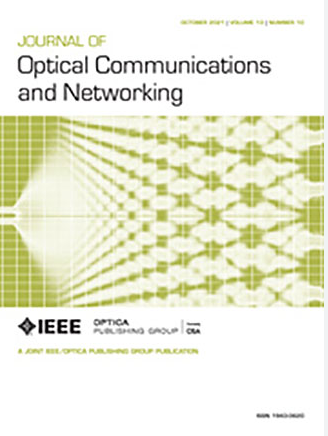半监督学习模型协同利用标记和非标记数据进行光网络故障检测
IF 4
2区 计算机科学
Q1 COMPUTER SCIENCE, HARDWARE & ARCHITECTURE
引用次数: 0
摘要
在光网络中,可靠的故障检测对于保持服务质量至关重要。该方法已从传统的性能阈值驱动方法发展到当代的数据驱动人工智能算法,主要采用监督和非监督学习。然而,随着二级遥测技术的出现,光传输网络已积累了大量未标注的性能数据,而标注数据却因标注工作量大而仍然有限。在这种情况下,为了解决有监督学习中标签数据稀缺和无监督方法的准确性问题,我们提出了 OpenFE-VIME 半监督模型。该模型既有监督方法的鲁棒性,又有无监督方法的灵活性。它不仅能利用丰富的非标记数据,还能解决标记数据有限所带来的挑战,从而实现可靠、高效的故障检测。在使用运营商光骨干网中 OTN 节点设备的性能数据进行评估后,OpenFE-VIME 模型表现出卓越的性能,F1 分数达到 0.947,准确率达到 0.946,同时将假阴性和假阳性率分别显著降低到 0.073 和 0.035。此外,我们的研究还探讨了该模型在利用标记数据和非标记数据方面的能力,并研究了各种数据比例下的训练收敛阈值。此外,我们还利用 t-SNE 可视化技术解释了该模型的内部机制和决策过程,从而提高了对其运行效率的洞察力。本文章由计算机程序翻译,如有差异,请以英文原文为准。
Semi-supervised learning model synergistically utilizing labeled and unlabeled data for failure detection in optical networks
In optical networks, reliable failure detection is essential for maintaining quality of service. The methodology has evolved from traditional performance threshold-driven approaches to contemporary data-driven AI algorithms, predominantly employing supervised and unsupervised learning. However, with the advent of second-level telemetry, optical transport networks have amassed a wealth of unlabeled performance data, while labeled data remains limited due to the intensive effort required for annotation. In this scenario, to address the challenges of scarce labeled data in supervised learning and the accuracy issues in unsupervised methods, we propose an OpenFE-VIME semi-supervised model. This model synergizes the robustness of supervised approaches with the flexibility of unsupervised approaches. It not only leverages the abundant reservoir of unlabeled data but also addresses the challenges posed by the limited availability of labeled data, enabling reliable and efficient failure detection. Upon evaluation using performance data from OTN node devices in the operator’s optical backbone network, the OpenFE-VIME model demonstrates remarkable performance, achieving an F1-score of 0.947 and accuracy of 0.946, while significantly reducing false negative and false positive rates to 0.073 and 0.035, respectively. Moreover, our research explores the model’s capabilities in utilizing both labeled and unlabeled data and investigates the threshold for training convergence across various data ratios. Additionally, the model’s internal mechanisms and decision-making processes are interpreted using t-SNE visualization, offering enhanced insights into its operational efficacy.
求助全文
通过发布文献求助,成功后即可免费获取论文全文。
去求助
来源期刊
CiteScore
9.40
自引率
16.00%
发文量
104
审稿时长
4 months
期刊介绍:
The scope of the Journal includes advances in the state-of-the-art of optical networking science, technology, and engineering. Both theoretical contributions (including new techniques, concepts, analyses, and economic studies) and practical contributions (including optical networking experiments, prototypes, and new applications) are encouraged. Subareas of interest include the architecture and design of optical networks, optical network survivability and security, software-defined optical networking, elastic optical networks, data and control plane advances, network management related innovation, and optical access networks. Enabling technologies and their applications are suitable topics only if the results are shown to directly impact optical networking beyond simple point-to-point networks.

 求助内容:
求助内容: 应助结果提醒方式:
应助结果提醒方式:


